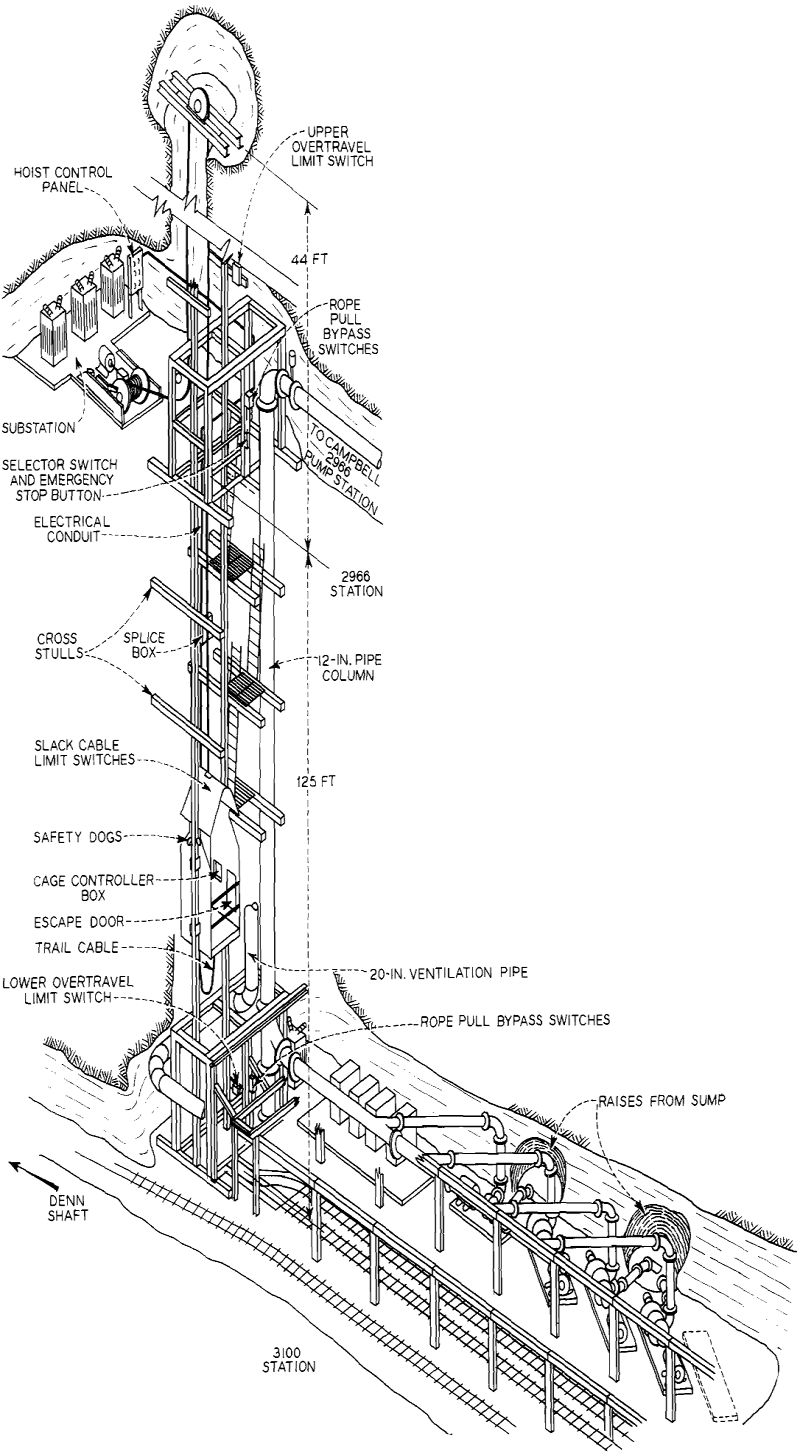A Semi-Automatic hoist has been installed at the 2966 station of the Copper Queen mine, since neither the bulk of supplies handled nor the number of men engaged in developing the 3100 level justifies the constant attendance of two cagers and two hoist operators.
The connecting service shaft between the 2966 and 3100 levels is actually a two-compartment raise. Below the 2966 level the shaft is 7×13 ft—slightly oversize to permit downcast ventilation and provide space for the 16-conductor flexible control cable. The raise extends 52 ft above the 2966 level for a 3-ft diam head sheave. Another 3-ft sheave is mounted as an idler between the hoist and head sheave, eliminating the need for an inclined cableway.

The 6000-lb hoist has a worm-gear drive with gear reducer and a 21-in. diam grooved drum for ¾-in. cable. It is driven by a 30/15 hp, 1800/900-rpm high torque motor at 115 fpm high speed and 57 fpm low speed. A solenoid brake acts on the coupler between the motor and the gear reducer, in conjunction with a post-type drum brake operated by an 800-lb thruster mechanism. Two chain-driven rotating cam-type geared limit switches and a centrifugal overspeed complete the mechanical assembly.
Three pistol-grip operated selector switches control the hoist’s direction of travel from the cage or from either station. These switches are arranged to be spring-returned to the off position from either the hoist or lower position to give dead-man control. Running lights plainly visible on each station indicate whether or not the hoist is in operation; however, the circuits in these selector switches are so arranged that the first switch operated will disconnect the circuit to the other two selector switches. Emergency-run maintaining-type pushbuttons are mounted above each selector to stop the hoist immediately when necessary—operations cannot be resumed from any location until the same button is reset to normal position.

